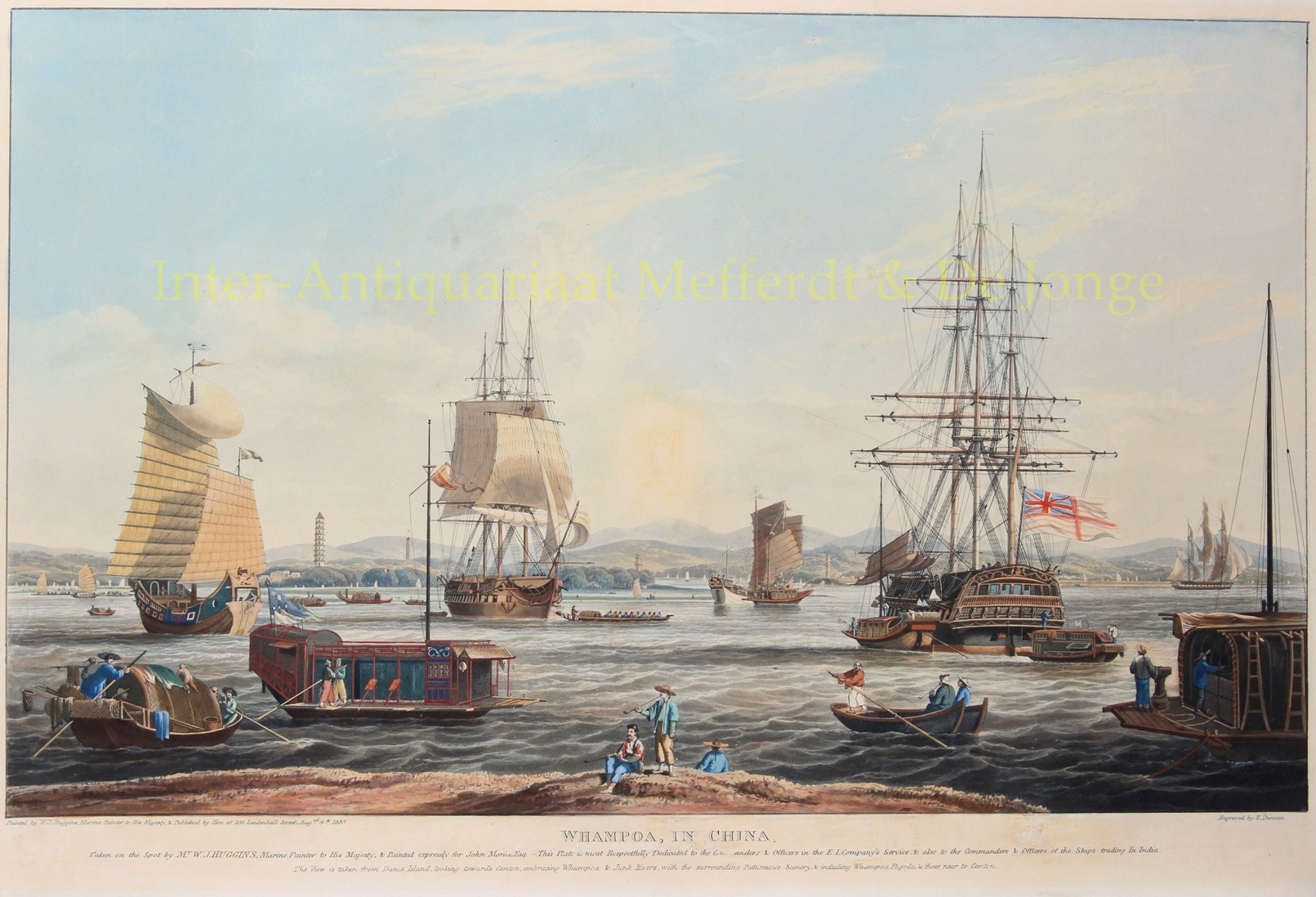GUANGZHOU, CENTER OF 18TH CENTURY OPIUM TRADE
“Whampoa in China“, aquatint made in 1835 by Edward Duncan after William John Huggins (1781-1845). With original hand colouring. Size: 35,5 x 58,5 cm.
Huangpu [Whampoa in Cantonese], the port of Guangzhou (Canton), was the beginning of the “Silk Road on the sea” for centuries and the largest Chinese port during the Qing Dynasty (1644-1912). The Dutch East India Company had a trading post from 1753. Silk, porcelain, tea, spices and other products found their way from here to the West through the Straits of Malacca, India and the Middle East.
Between 1757 and 1842 it was the only Chinese port open to foreign trade. Ironically, it is during that period that quantities of opium transiting through Huangpu surged. In spite of imperial edicts banning the commerce of the drug, Huangpu became the center of opium smuggling.
With so much opium contraband entering China through Huangpu, tensions rose between the ‘gweilos’ (or ?? – a derogatory Cantonese term referring to foreigner) and imperial rulers which eventually led to the Opium Wars (the first from 1839 to 1842) and ensured that more Chinese ports were opened to foreign trade.
Price: SOLD


